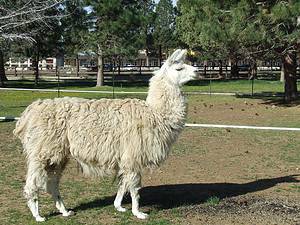Llamas are best known for their long necks and the fact that they spit. Native to the South American continent, these creatures are closely related to alpacas and belong to the camelid family. There is so much to learn about these creatures that have been imported in impressive numbers to the United States. Therefore, we have compiled 10 incredible facts about llamas.

1. Llamas are Very Vocal

Llamas are vocal animals that make many different sounds when engaging in different activities.
©Joy Brown/Shutterstock.com
Llamas are vocal animals that make many different sounds when engaging in different activities. Mothers hum to communicate with their babies, which eventually serves as a way for the babies to recognize their mothers. When they mate, llamas make a gargling nose that is called an “orgle,” and the females also make clicking sounds from time to time.
Humming is the primary vocalization of llamas, and they also make this sound when they are tired, excited, uncomfortable, curious, etc.
2. Llamas are Used as Therapy Animals
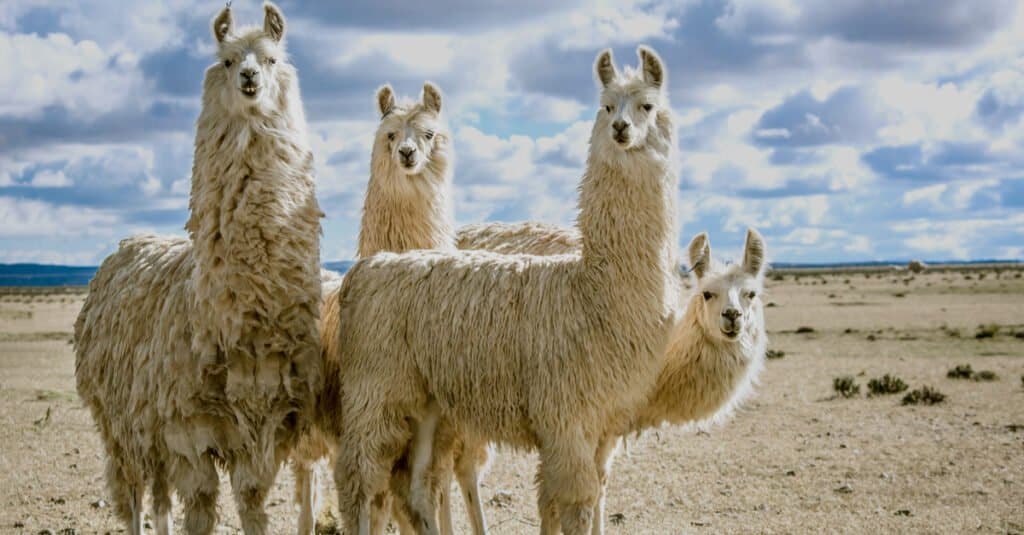
Llamas have been certified as therapy pets.
©Noe Besso/Shutterstock.com
Llamas have a soothing and calm aura around them; therefore, they serve as therapy animals. These amazing creatures can be trained as professional comforters that help provide therapy in schools, nursing homes, and hospitals.
A popular therapy llama was “Rojo,” who had several appearances in the media and had two children’s books written on him. He was a therapy llama at MTN Peaks Therapy Llama & Alpacas, and he passed away at 17.
3. Llamas Make Effective Guards for Livestock
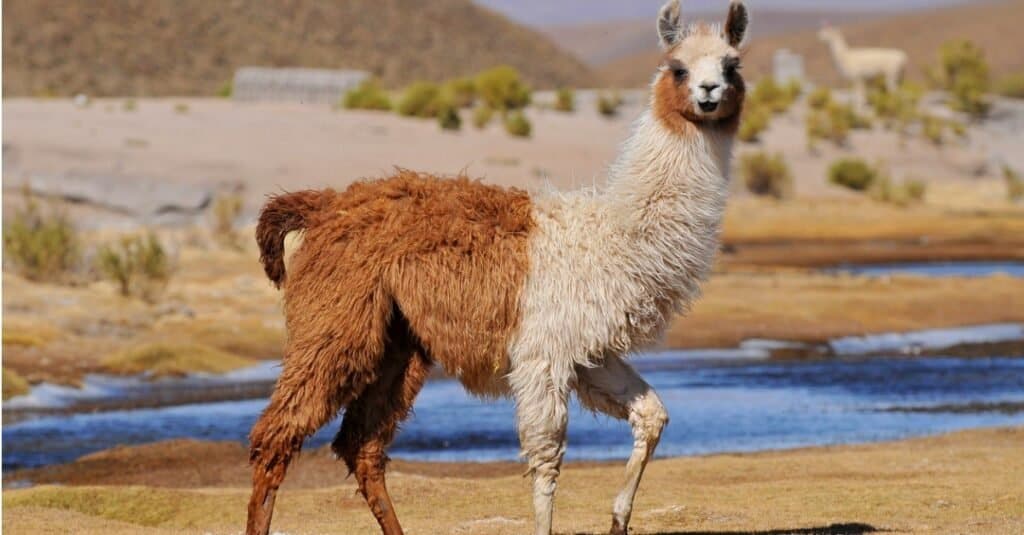
Despite their calm nature, llamas are very good guards against coyotes, foxes, and dogs.
©Cezary Wojtkowski/Shutterstock.com
This may be surprising, especially after you just learned that llamas have such a soothing disposition that they can be trained therapists. However, despite their calm nature, llamas are very good guards against coyotes, foxes, and dogs. They have been known to attack, injure, and kill coyotes that attempt to prey on sheep and other livestock. They may also make noises that will alert owners to the presence of a predator.
Studies to determine the effectiveness of llamas as guards for livestock revealed a decrease in sheep losses to predators by significant numbers after the introduction of llamas. Some other studies revealed a complete elimination of losses.
It should be noted that it is better to have one guard llama than two or more. This is because when they are more than one, they tend to bond and forget about the cattle.
4. When Llamas Spend too Much Time Near Humans, They May Confuse Them for Other Llamas and Attack

This aggressive behavior toward humans as a result of the confusion is called Berserk llama Syndrome.
©Vicente Suarez Belloch/ via Getty Images
This phenomenon is most common among male llamas. It occurs when a llama has been exposed to humans from its juvenile days so much so that he is unable to distinguish humans from other llamas. This is further reinforced if such a llama is isolated from others of its kind.
You would think that confusing humans with other llamas will make humans more adorable in the sight of the llamas; however, it does not. Instead, it makes humans susceptible to aggressive behavior and attacks from llamas who want to establish dominance over other llamas. This aggressive behavior toward humans as a result of the confusion is called Berserk llama Syndrome. Even though both male and female llamas may get this syndrome, it is worse in males because they have rough interactions, which include biting, chest ramming, leg wrestling, and charging. If a male has this syndrome, he may need to be euthanized.
5. There is a God Believed to be a Llama

Llamas are sacred to the Andean people, who refer to them as “silent brothers.”
©Terex/ via Getty Images
Urcuchillay was a god worshiped by Incan herders, and the god was believed to be a llama that watched over the herders’ animals. Furthermore, llamas are sacred to the Andean people, who refer to them as “silent brothers.”
6. Llamas Make Friendly and Easy-to-Maintain Pets
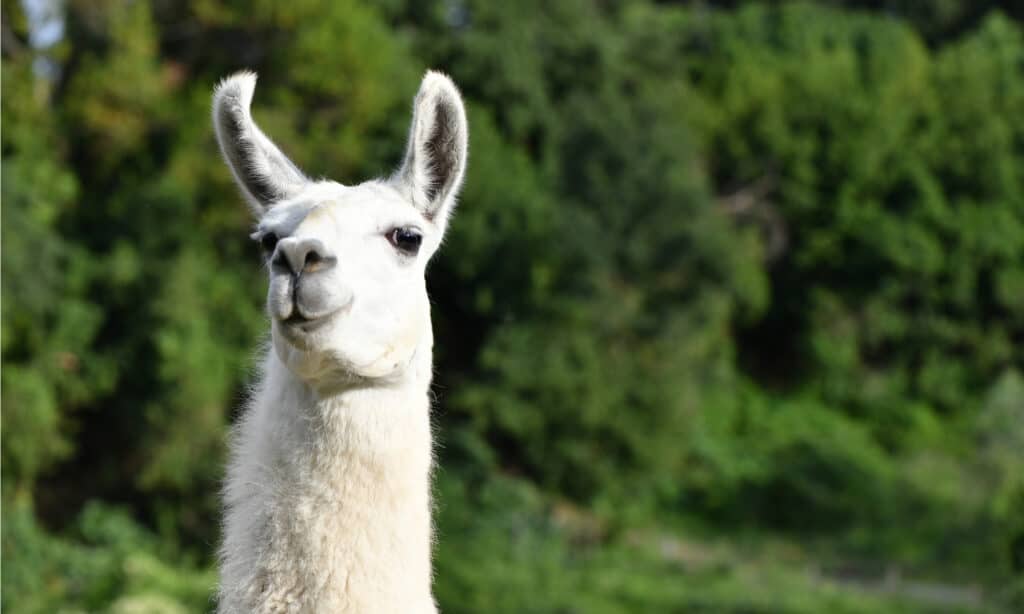
Llamas are among the easiest animals to keep as pets because they are friendly and easy to make happy.
©La Su/Shutterstock.com
Llamas are among the easiest animals to keep as pets because they are friendly and easy to make happy. Maintaining a llama is not difficult work for many reasons. One reason is that they don’t require as much food as other farm animals. Furthermore, they don’t destroy pasture when they graze because they don’t pull up roots, and they walk very gently on the ground.
Llamas are among the friendliest animals you can meet. If you want to keep them as pets, ensure that you get at least two because they are social animals.
7. There are Subtle Differences Between Llamas and Alpacas if you Know What to Look For

One subtle difference between both animals is that llamas have long ears, while alpacas have short ears.
©Juni Samos/ via Getty Images
Llamas and alpacas look extremely alike; however, there are subtle but obvious differences between them to the knowledgeable eye. One major difference is that llamas are taller than alpacas, with llamas being about four feet tall at the shoulders compared to alpacas’ three feet. Furthermore, when it comes to weight, llamas weigh around 280-450 lbs., compared to alpacas’ 120-145 lbs.
Another subtle difference between both animals is that llamas have long ears, while alpacas have short ears.
8. Llamas Have Lengthy Sex for an Animal Their Size
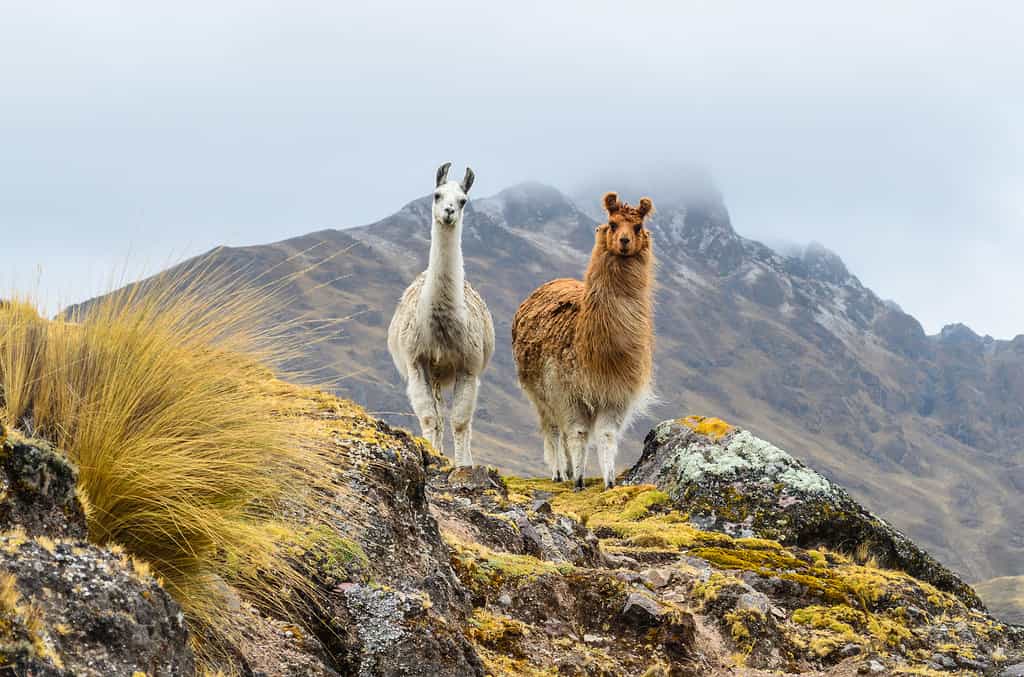
©DaniCachang/ via Getty Images
When llamas mate, they do so for about 20-45 minutes, which for an animal their size is quite unusual. Furthermore, they also mate in a lying-down position, which is uncommon for their size.
The gestation period for these animals is about 11 months, and their babies are called “Cria.”
9. Llamas Can be Used as Pack Animals
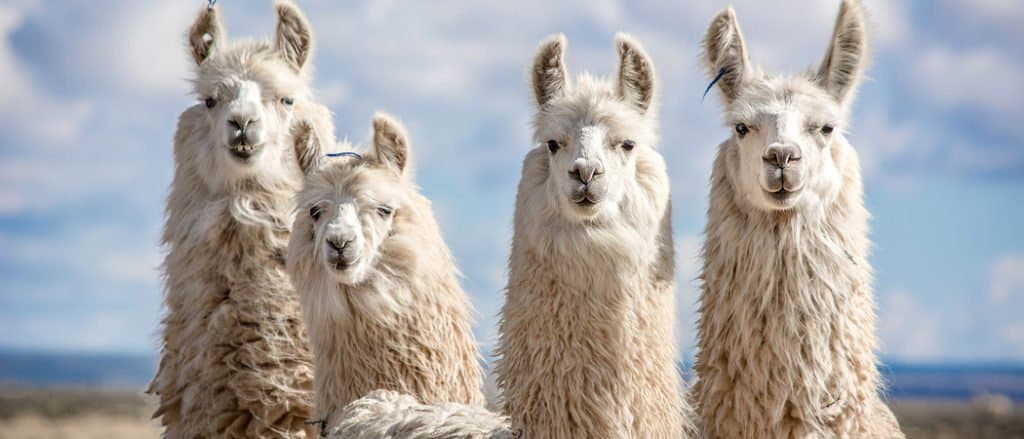
Llamas have been packing loads for centuries.
©Noe Besso/Shutterstock.com
These unique creatures may be used to carry loads, especially in the mountains. You may think it strange to see a string of llamas carrying loads today, but the truth is that these animals have been packing loads for centuries. The native people of the Andes Mountains used them to transport items en masse.
Averagely, llamas may travel for up to 20 miles a day, carrying 75 pounds of load.
10. Llamas Have Three Stomachs

©Johan C. op den Dries/Shutterstock.com
The llama has three stomach compartments, namely the rumen, abomasum, and omasum. This complex stomach structure allows it to digest high cellulose and tough foodstuff and like goats and cows, the llama also regurgitates its food and chews it again.
Furthermore, the animal has a very long and complex large intestine that allows it to survive on less water than most other animals. This is an advantage for the regions where the llama lives.
The photo featured at the top of this post is © La Su/Shutterstock.com
Thank you for reading! Have some feedback for us? Contact the AZ Animals editorial team.




